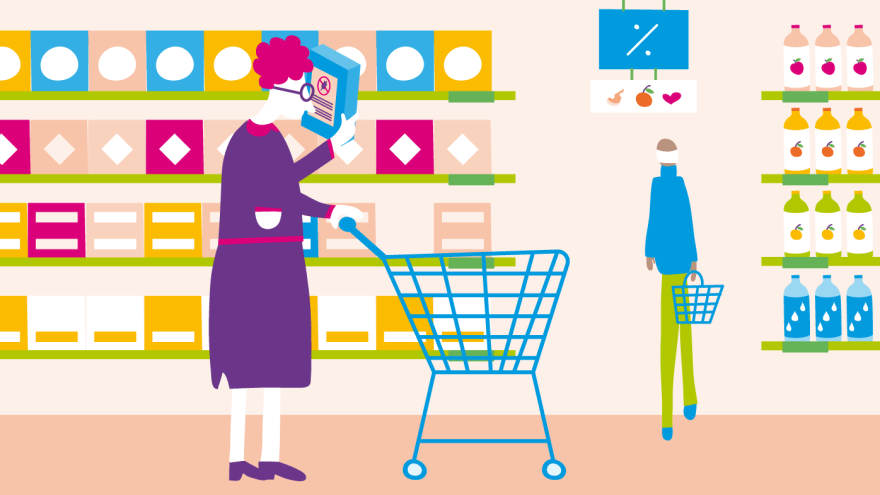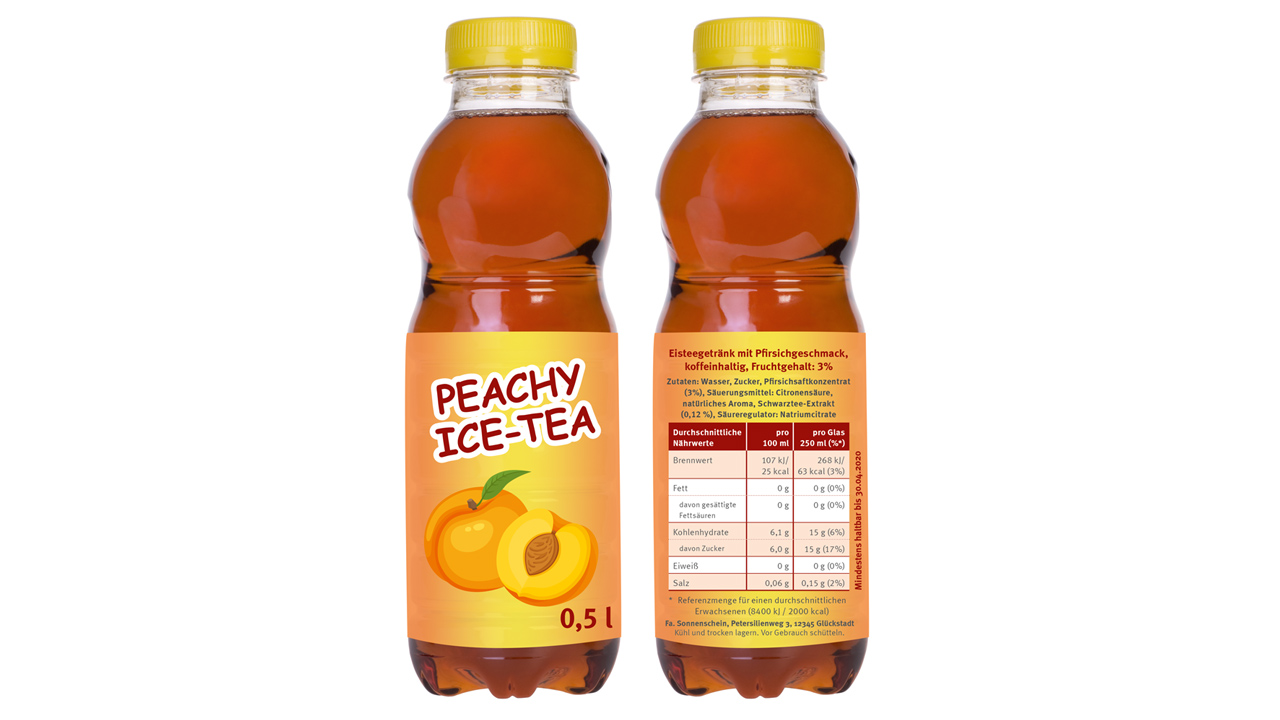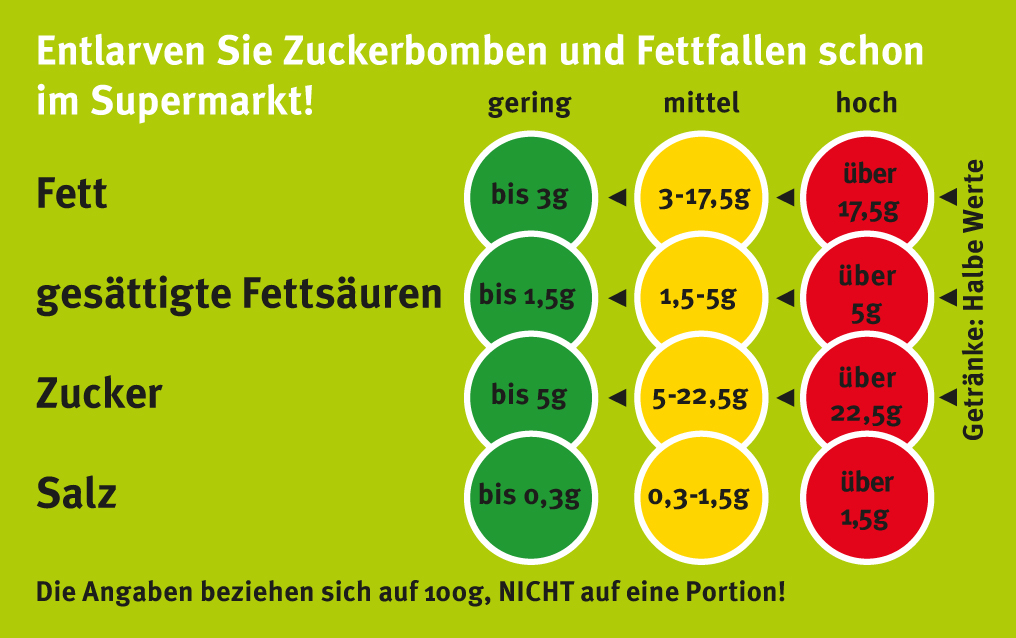“Name of the food product”
Many foods have creative names, for example “Peachy Ice-Tea” (see image). On the back of the bottle it says “peach-flavoured iced tea drink”, which is the legal designation of the product. This tells you exactly what’s in it.
List of ingredients
In the ingredients list you will find all the ingredients contained in the product. The order of the ingredients depends on the quantity of the ingredients: At the top is the ingredient that is the most prevalent. In our example, “Peachy Ice-Tea”, the most prevalent ingredient is water. Then follows the ingredient with the second highest content: sugar. All other ingredients follow in the same descending order of the quantity they are contained in.
Ingredients that can cause an allergic reaction are printed in bold letters, capital letters or an underline.
Nutrition facts label
The nutrition facts label tells you the amount of energy, carbohydrates, sugar, fat, saturated fatty acids, protein and salt contained in the product. These figures refer to 100 grams for solid foods and 100 millilitres for liquid foods. For example, “Peachy Ice-Tea” contains 6 grams of sugar per 100 millilitres.
Quantity
The quantity indicates how much of the food is in the packaging. It is specified in grams, kilograms, millilitres or litres. Sometimes the number of pieces is also printed on the packaging, for example in the case of packed lemons.
Contact
Packaged foodstuffs must bear the name or company name and address of the manufacturer, packer or seller. You can contact them if you have queries about the product or to complain if something is wrong with the product.
What is the shelf life of the product?
A date is printed on all packaged food.
For products with a long shelf life, you will find the “best before” date. This means:
- you can eat the food at least until that day
- and the food looks, smells and tastes exactly the same as on the first day.








